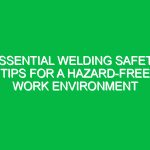Welcome and Introduction
Good morning, team! Today, we are here for a crucial toolbox talk focused on a very important topic: High Hazard Activities within our Health, Safety, and Environment (HSE) framework. Our goal is to ensure that everyone understands the risks associated with these activities and knows how to mitigate them effectively. Safety is not just a priority; it’s a culture we must embrace every day.
Understanding High Hazard Activities
High Hazard Activities refer to tasks that pose significant risks to Safety and health due to the nature of the work involved. These activities often involve heavy machinery, hazardous materials, confined spaces, working at heights, or any situation where the potential for serious injury or illness is elevated. Recognizing what constitutes a high hazard activity is the first step in safeguarding ourselves and our colleagues.
Examples of High Hazard Activities
- Working with or around heavy machinery.
- Handling hazardous substances like chemicals or asbestos.
- Performing tasks at elevated heights, such as scaffolding or ladder work.
- Entering confined spaces, such as tanks or underground vaults.
- Electrical work that poses a risk of shock or fire.
In the next sections, we will discuss the Procedures, best practices, and Safety Measures we need to adopt when engaging in these activities.
Identifying Potential Hazards
Before we embark on any high hazard activity, it’s essential to identify potential Hazards. This means looking for anything that could cause harm, including:
- Environmental factors: Weather conditions, lighting, and workspace layout.
- Equipment and machinery: Malfunctions, improper usage, and lack of Maintenance.
- Human factors: Fatigue, lack of Training, or complacency.
Real-Life Scenario
For instance, consider a team that needs to perform maintenance on a high-pressure pipeline. If they fail to assess the risk of potential leaks or the condition of the equipment, they could endanger themselves and their coworkers. A thorough pre-task assessment is vital.
Best Practices for Safety
Here are some Best Practices to follow when engaging in High Hazard Activities:
- Conduct Risk Assessments: Before starting any high hazard activity, perform a risk assessment to identify potential hazards and develop a plan to mitigate them.
- Use Personal Protective Equipment (PPE): Always wear the appropriate PPE for the task, whether it’s helmets, gloves, goggles, or harnesses.
- Communicate Clearly: Ensure that everyone on the team understands their roles and the safety protocols that must be followed.
- Follow Procedures: Adhere to established safety procedures and protocols. If you’re unsure of something, ask your supervisor.
- Stay Alert: Maintain situational awareness and remain focused on your tasks. Reduce distractions as much as possible.
Importance of Training and Compliance
Proper training is vital in handling High Hazard Activities. Participating in regular training sessions ensures that everyone is aware of the latest safety practices, regulations, and technologies. Compliance with safety Regulations not only protects you but also the entire team and the organization. Remember, we are legally obligated to adhere to safety Standards outlined by OSHA and other relevant authorities.
Company Policies and Regulations
It’s also important to familiarize yourself with our company’s specific policies regarding high hazard activities. These policies are designed to keep you safe and ensure compliance with legal requirements. Non-compliance can lead to severe penalties and, more importantly, injuries.
Engagement and Open Discussion
Now, let’s open the floor for discussion. I encourage everyone to share their thoughts or experiences related to high hazard activities. Here are a few questions to get us started:
- Have you encountered any high hazard activities that you think we should address differently?
- What Safety Measures do you believe are most important when working with heavy machinery?
- Can anyone share a situation where a lack of communication led to a near-miss or accident?
Your input is invaluable. By sharing experiences, we can learn from each other and reinforce our commitment to safety.
Conclusion
In conclusion, understanding and managing High Hazard Activities is essential for maintaining a safe work environment. By identifying potential hazards, following Best Practices, and complying with regulations, we can reduce risks significantly. Remember, safety is a shared responsibility, and it requires active participation from each one of us.
Thank you for your attention today and for your ongoing commitment to safety. Let’s keep looking out for one another and ensure that we all return home safely at the end of the day.


